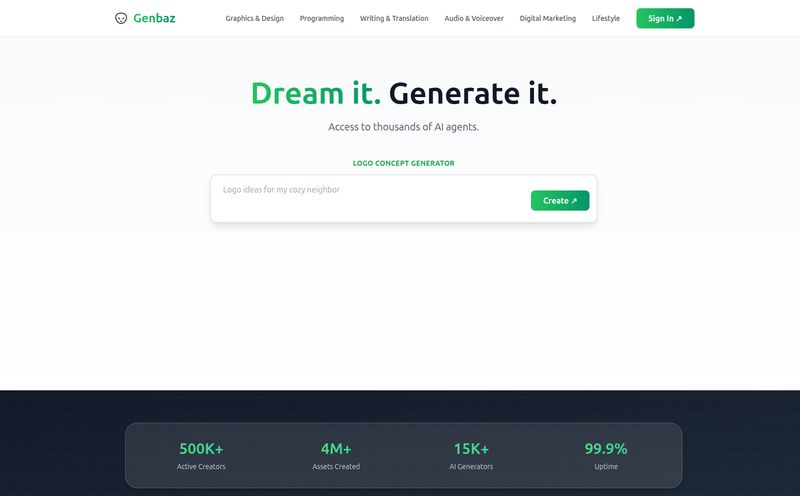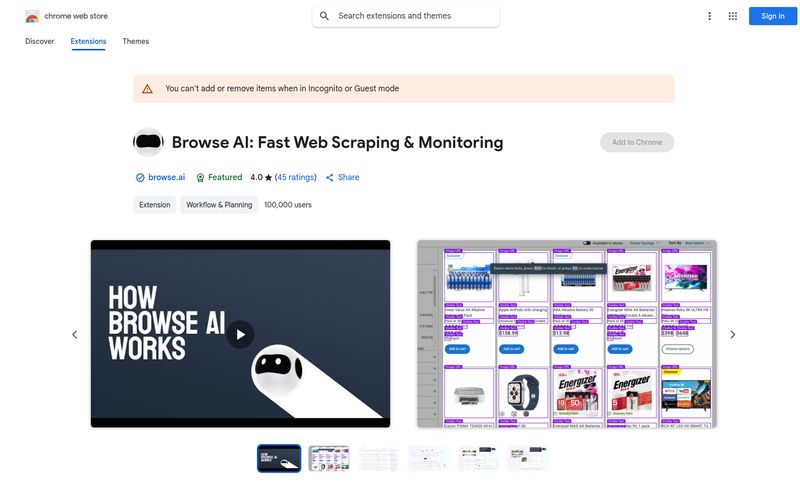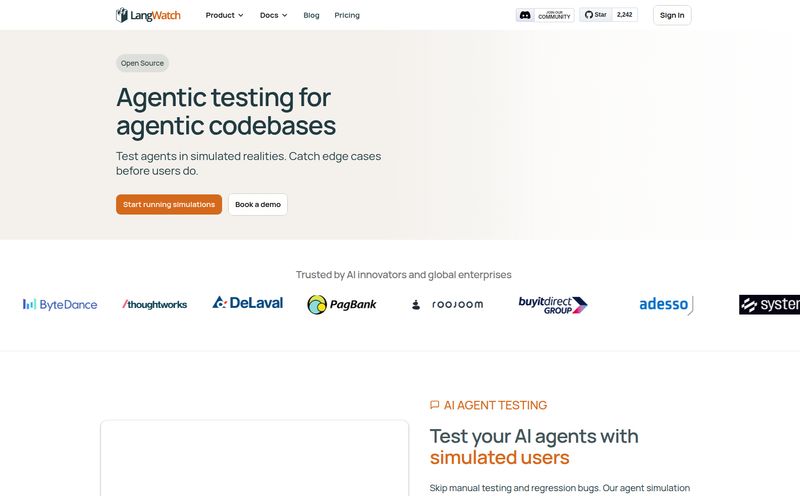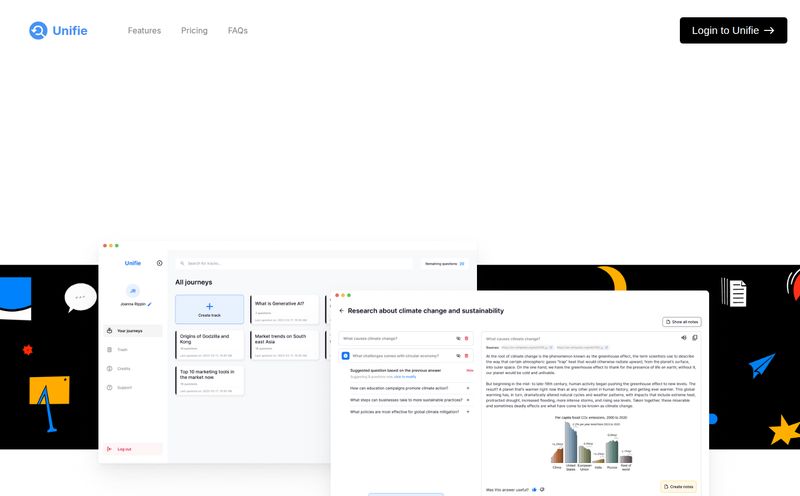We've all been there. You've got this brilliant idea for an AI application. You've sketched it out, you've picked your model, and you're ready to build. Then you hit the wall. The API calls are sluggish. The user experience feels like wading through treacle. The costs start creeping up in ways you didn't expect. It’s the single most frustrating bottleneck in the generative AI space right now, and I've lost more hair over slow inference times than I'd care to admit.
For weeks, I've been hearing whispers in different Slack channels and on X (the platform formerly known as Twitter) about a platform that's supposedly changing the game. The name? Fireworks AI. The promise? Ludicrous speed. So, naturally, the professional skeptic in me had to take a look. Is it just another platform with slick marketing, or is there some real fire behind the smoke? Let's get into it.
What's the Big Deal with Fireworks AI Anyway?
At its core, Fireworks AI is an inference platform built for one thing above all else: speed. It's designed to run a whole host of open-source generative AI models—we're talking large language models, image models, you name it—at a blistering pace. Think of it as the high-performance engine for your AI applications. You're not building the car from scratch; you're dropping in a finely tuned V8 that’s ready to tear up the track.
They aren't just blowing smoke, either. When you see names like Samsung, Quora, and DoorDash on their homepage, you know this isn't some weekend project. These are companies where every millisecond of latency can translate into thousands of dollars. Quora's own testimonial mentions their Poe app relies on Fireworks for speed and cost-effectiveness. That’s a pretty solid vote of confidence.
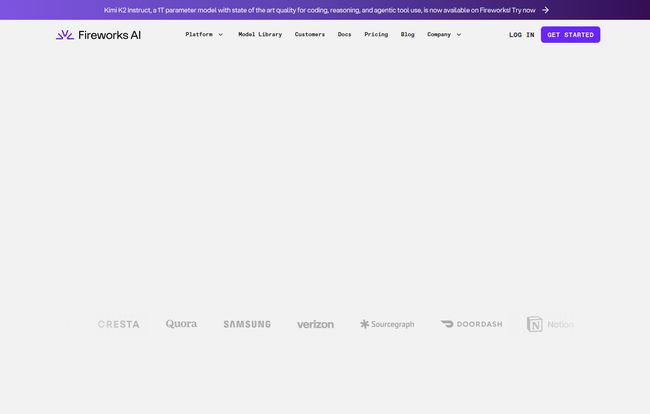
Visit Fireworks AI
Let's Talk Speed and Performance
Okay, so what does "fast" actually mean here? Fireworks AI makes some pretty bold claims. We're talking about things like 9x faster RAG (Retrieval-Augmented Generation) and 6x faster image generation. These aren't just minor improvements; they're quantum leaps. For any developer building a chatbot or an image tool, that's the difference between a user who sticks around and one who bounces.
This isn't just a software trick. They've built their whole stack, from custom hardware configurations to optimized model kernels, for pure performance. It's the kind of obsessive engineering that geeks like me really appreciate. They boast about a production-grade infrastructure that's already churning out over a trillion tokens a day. That's scale. That's reliability. It means your app won't fall over during that crucial product demo or when you finally get that traffic spike you've been working for.
A Smorgasbord of Models at Your Fingertips
One thing I've always found limiting is being locked into a single proprietary model's ecosystem. Fireworks AI completely sidesteps that problem. They provide access to a massive library of over 100 state-of-the-art open-source models. You want Meta's new Llama 3? It's there. Need the raw power of Mixtral 8x7B? No problem. Building an image app? They've got Stable Diffusion SDXL and a bunch of others ready to go.
This is more than just variety for variety's sake. It gives you, the developer, the power to choose the right tool for the specific job. You don't use a sledgehammer to hang a picture frame. Likewise, you might use a smaller, faster model for simple summarization tasks and a larger, more powerful one for complex creative writing. Having that choice, all on one platform with consistent speed, is a massive advantage.
Customization Without Breaking the Bank: Fine-Tuning
Here’s where things get really interesting for me. Generic models are great, but the real magic happens when you can teach a model about your specific domain, your company's voice, or your unique data. That's called fine-tuning. And historically, it's been a complex, expensive, and time-consuming pain in the neck.
Fireworks AI claims you can fine-tune and deploy a model in minutes. But the killer feature, the one that made me sit up and take notice, is this: there's no additional cost for hosting LoRA fine-tunes. Let that sink in. You pay for the initial training process (which is priced per token), but after that, serving your custom model doesn't cost you extra. This completely changes the economics of building custom AI solutions. It makes it accessible. It democratizes a process that was previously reserved for teams with deep pockets and deeper expertise. This is a game-changer, plain and simple.
The Nitty-Gritty: A Look at Fireworks AI Pricing
Speed is great, but it doesn't mean much if you can't afford it. So, how much does all this performance cost? Their pricing model is pretty transparent, which I appreciate. It's mostly a pay-as-you-go system, broken down by how you're using the AI.
Pay-As-You-Go for Models
For most users on the 'Developer' plan, you'll be paying for what you use. It's not a single flat rate, but rather depends on the model and the task. For text models like Llama 3, you pay per million tokens for input and output. For speech-to-text, it's per second of audio. For image generation with models like Stable Diffusion, it’s often priced per image or per generation step. This granular approach means you're not overpaying for simpler tasks. It's fair, but it does mean you need to keep an eye on your usage.
Dedicated Power with On-Demand Deployments
For the big players, the 'Enterprise' clients, there’s an option for On-Demand Deployments. This is where you pay a flat hourly rate to reserve a specific GPU, like an NVIDIA A10G or the beastly A100. This is for applications that need guaranteed, consistent high throughput without any 'noisy neighbors'. It's a premium option for when your application absolutely, positively cannot have a moment of slowdown.
Who Is Fireworks AI Really For?
So, who should be signing up? Honestly, a pretty wide range of people. If you're a startup or a solo developer trying to get a fast, responsive AI prototype off the ground, the Developer plan is perfect. The pay-as-you-go model and the free hosting for fine-tunes lower the barrier to entry significantly.
On the other end of the spectrum, it's clearly built for scale. The enterprise features, the on-demand deployments, and the raw performance are tailor-made for established companies looking to integrate cutting-edge AI without the headache of building and maintaining their own GPU clusters. It's a tool that can start with you on day one and grow with you as you become a market leader.
The Other Side of the Coin
No tool is perfect, right? It wouldn't be a real review if I didn't mention the potential downsides. The pay-per-token pricing, while fair, can be a bit unpredictable if you're not careful. A sudden spike in usage could lead to a surprise bill, so robust monitoring is a must.
Also, the platform's heavy reliance on open-source models is a double-edged sword. It offers incredible flexibility, but sometimes these models require a bit more fine-tuning and experimentation to get the same polished result as some of the big, proprietary, closed-source options. This isn't a flaw in Fireworks AI itself, but a reality of the open-source landscape that users should be aware of. You might need to roll up your sleeves a little more.
Final Thoughts: Is Fireworks AI the Real Deal?
After digging in, I have to say I'm impressed. In a market getting more crowded by the day, Fireworks AI has carved out a very clear and compelling identity. They are the need-for-speed option. They're for the builders who understand that user experience is paramount and that latency is the enemy.
The combination of raw performance, a vast library of open-source models, and truly disruptive pricing on fine-tuning is a potent mix. It's not just another API wrapper. It feels like a thoughtfully engineered platform built by people who understand the real-world pains of developing with AI. I've been in the SEO and traffic generation game for years, and I know that speed wins. It wins with search engines and it wins with users. Fireworks AI seems to have taken that lesson to heart.
Frequently Asked Questions (FAQ)
- What makes Fireworks AI so fast?
- It's a combination of things! They use highly optimized infrastructure, including their own custom inference engine called Fire-Engine, advanced model compilation techniques, and efficient hardware management to squeeze every last drop of performance out of the GPUs.
- Is Fireworks AI good for beginners?
- Yes and no. A beginner can absolutely get started quickly with their standard model APIs. The platform is easy to use. However, to get the most out of it, especially with fine-tuning, some familiarity with AI concepts is helpful. It's a platform you can grow into.
- How does the fine-tuning pricing actually work?
- You pay a one-time fee for the training process itself, which is priced per token of your training data. The revolutionary part is that once your LoRA model is created, Fireworks AI hosts it for you at no additional charge. You just pay the standard inference rates when you use it.
- Can I use my own custom model on Fireworks AI?
- Yes, deploying your own fine-tuned models is one of the platform's main features. They are focused on making custom AI accessible and performant.
- What is the main difference between the Developer and Enterprise plans?
- The Developer plan is a serverless, pay-as-you-go model perfect for starting projects and general use. The Enterprise plan offers dedicated, on-demand deployments (you reserve specific GPUs for a fixed hourly rate), along with personalized configurations and support for large-scale, mission-critical applications.
Conclusion
If you're building anything with generative AI and you've felt the pain of slow response times, you owe it to yourself to check out Fireworks AI. It’s a powerful, specialized tool that does one thing exceptionally well: it delivers answers, images, and results fast. And in the digital world, speed is everything.
